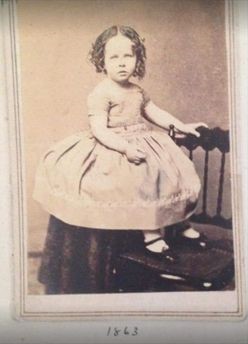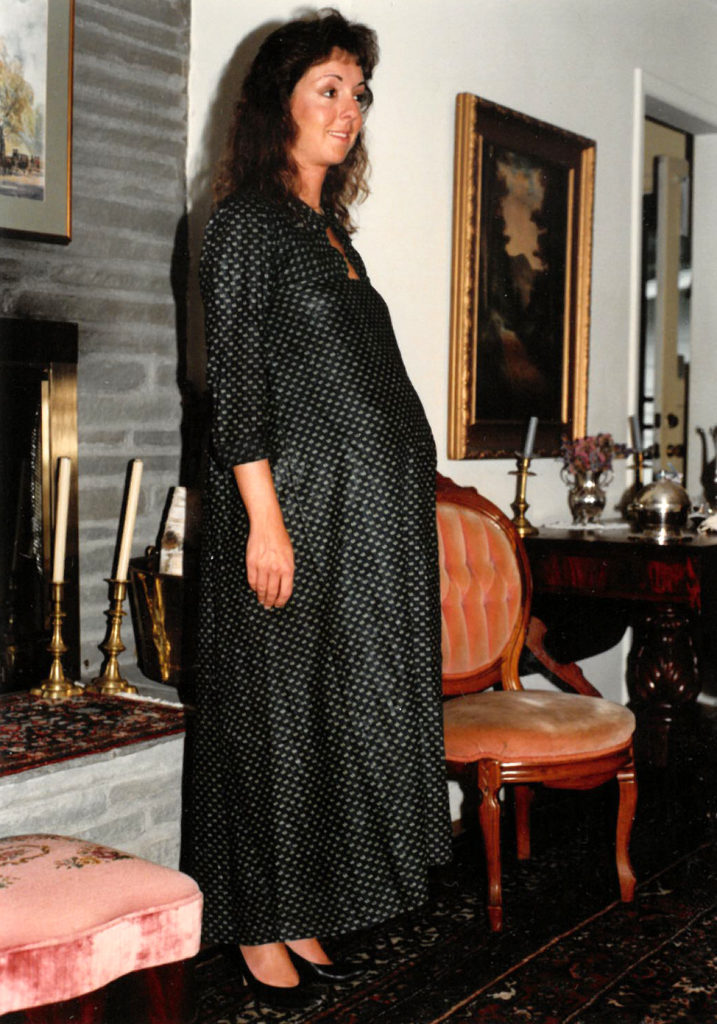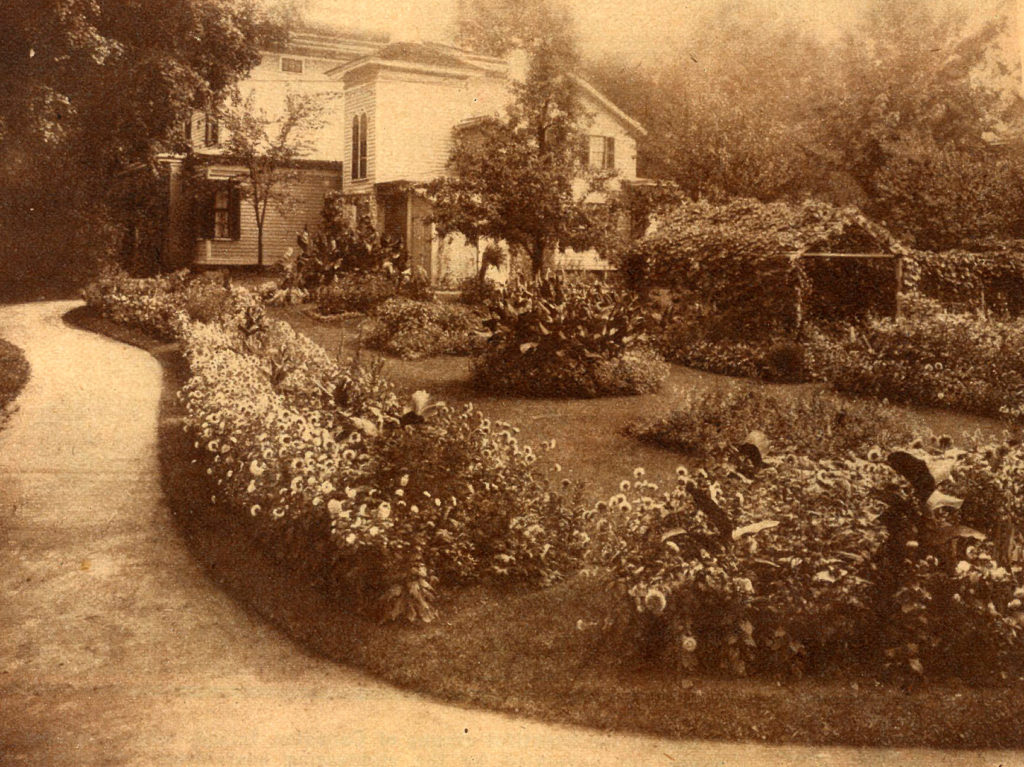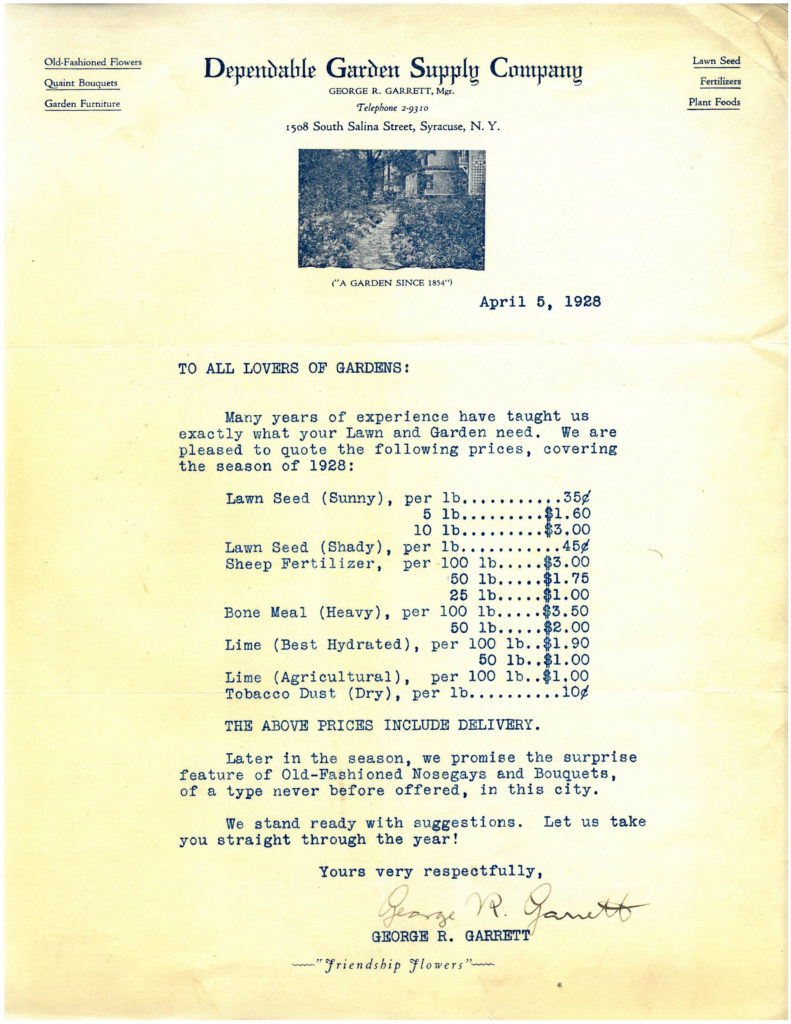Mary Virginia Raynor was born in Syracuse on September 6, 1861 a few months after the American Civil War had commenced. She was born in the family home at 1508 South Salina Street, the house her father had built eight years earlier, in 1854. Undoubtedly, Mary Virginia’s family experienced the upheaval of the Civil War, and most likely the greatest impact it had on Mary was encountering President Abraham Lincoln’s funeral train when it briefly stopped in Syracuse late on Wednesday, April 26, 1865.

About 15,000 residents congregated at the New York Central railroad depot on that night to pay their last respects to the slain president. Syracuse was in mourning like so many other communities. Private and public buildings along Railroad (now Washington) Street were festooned with black and white bunting to commemorate the solemn arrival of the funeral train. The Central New York Railroad depot also was decorated in tasteful fashion; drooping dark bunting and flags hung from the smoke-filled rafters and evergreens adorned the sides of the building.
Lincoln’s funeral train, consisting of the hearse car and eight other cars, and dubbed the Lincoln Special, arrived in Syracuse at 11:15pm. The night was wet; rain had showered the city since 6pm. However, it didn’t deter the large crowd that had congregated at the depot to witness the mournful conveyance. As the train arrived, the restless people pressed forward toward the hearse car, straining to look one more time on the assassinated president. During the fifteen minute stop, only a few citizens were allowed onto the train to view the president’s casket, including several women, with Mrs. Burr Burton placing a wreath of white flowers on the casket. Also invited into the funeral car on that sorrowful night was three year old Mary Virginia Raynor, carried by her father George, who placed a bouquet of white flowers atop Lincoln’s casket. The bouquet was inscribed, “The last tribute of respect from Mary Virginia Raynor, a little girl three years of age. Syracuse, April 26, 1865.” At precisely 11:30pm, the funeral train departed Syracuse and headed west toward the outlying towns and villages on its way back to Springfield, Illinois.
The fresh white pyrethrum and mignonette flowers that comprised little Mary’s bouquet had come from her father’s greenhouse. George Raynor carefully arranged the bouquet and wrote the attached memorial note. On that fateful Wednesday, the family went to the St. Charles Hotel, which stood on the current site of the University Block along Railroad (Washington) Street. For the next four hours they sat on the hotel’s balcony waiting for the train, which became delayed by its numerous stops in upstate New York. As the hours passed, young Mary slept drowsily on her mother’s lap. Several times she awoke suddenly, fearing that she might miss the momentous occasion. Finally, the train bell tolled as it reached Syracuse’s train depot, waking Mary, and rousing the anxious crowd gathered in the street below. Mary vividly recalled that event so many years later – how her father carried her onto the train, how she tightly held the bouquet in her small hand, and how she placed her flowers on top of so many others enveloping the casket.
Mary Virginia Raynor grew to adulthood in the house where she was born at the corner of South Salina and Furman Streets in Syracuse. Except for the first nine years of her marriage, Mary continually lived in the same house, which became a south side landmark. For many years the property’s landscaping included a beautiful garden and greenhouse. The garden was one of Mary’s pleasures, the colors and floral aromas filling the air around the property. She eventually hired a private gardener to care for the numerous plants, including the abundant rose bushes. Mary’s garden attracted many visitors who stopped to admire the luxurious and orderly array of blossoms. Some of the same white flowers that Mary’s father picked for her funerary bouquet continued to grow there for many years afterward.
Mary Virginia Raynor married George William Garrett on Thursday, October 21, 1886. Mary’s mother gave away her daughter, as her father, George, had previously passed away. The couple had one son, George Raynor Garrett, born in 1894.

Mary’s maternity dress, the one she wore when pregnant with George, was recently donated to OHA by Kathy Cunningham. Mary’s granddaughter, Jean Mary Garrett Tradup, discovered the dress in her grandmother’s house attic in 1990. By looking at the photographs of the model wearing the dress 30 years ago, you may notice that the dress dates from the late 19th century. The dress’ materials also indicate its date of origin. It is a very nice addition to OHA’s local history clothing collection and OHA’s curator of collections, Tom Hunter, appreciates Kathy Cunningham’s donation very much! It is the first maternity dress donated to OHA’s clothing collection, and its intrinsic value is certainly enhanced by its association with such a renowned and beloved Onondaga County woman.
Mary Virginia Raynor Garrett became an authority of New York history, especially the pioneer history of Onondaga County. Mary was a very good friend of Reverend William M. Beauchamp, a notable Episcopal clergyman and Native American ethnologist. She also was the secretary of the Onondaga Historical Association for many years, and worked with several prominent OHA directors. During the last full year of Mary’s life, she participated in the centennial celebration of the Village of Syracuse in 1925. She also was a member of First Presbyterian Church in Syracuse.


Mary left the family house and garden to her son George, who developed his own love of gardening and landscaping, establishing the Dependable Garden Supply Company at the same address. George’s business stationery advertised “Friendship Flowers” for sale and unquestionably his business thrived as a result of the care given to the beautiful garden that graced his mother’s and his home for several generations.
Mary Virginia Raynor Garrett died on January 4, 1926 and is buried in Oakwood Cemetery in Syracuse.

